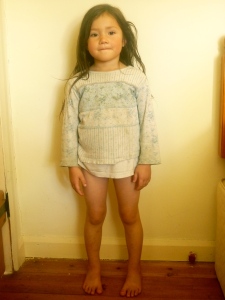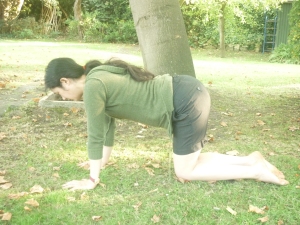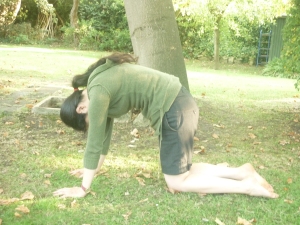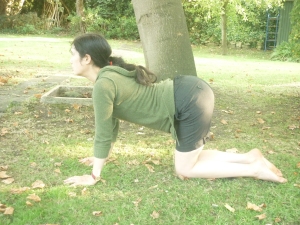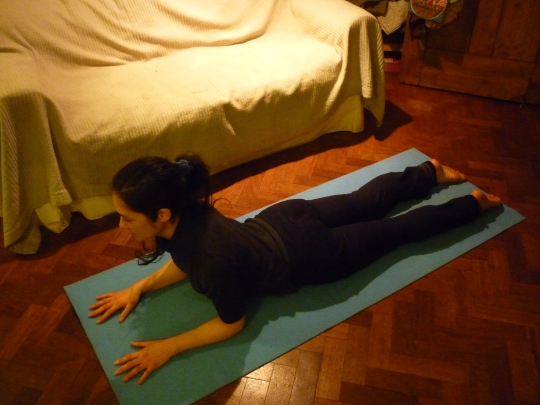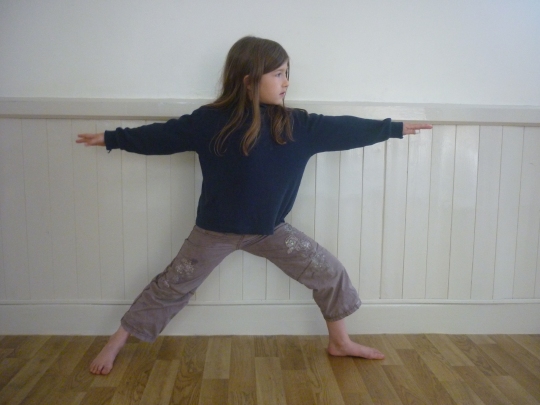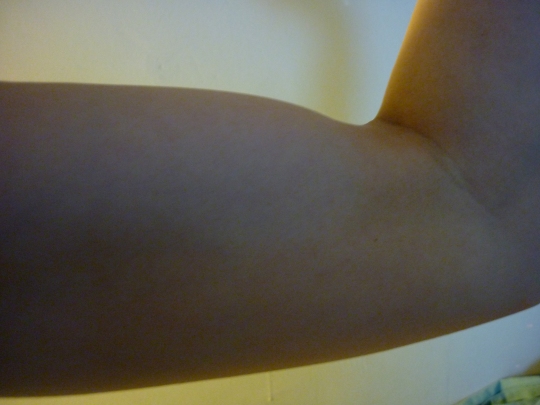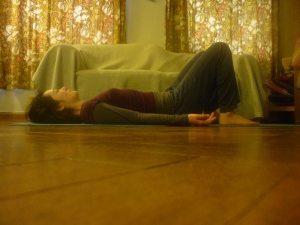
Savasana with knees bent…
BENEFITS: Lengthens the spine. Relaxes the body, mind and spirit. Beneficial for the many systems of the body – especially the immune system. Relieves stress.
CONTRAINDICATIONS: This is one of the safest yoga postures you can do, but as with all postures of the week, only practice if it feels comfortable… Often late in pregnancy lying on your back can make you breathless. This is because the heaviness of the uterus can compress a large blood vessal (the vena cava) when supine. This will lessen the blood flow to the heart which will cause a drop in blood pressure and decrease the amount of blood getting to your baby.
You will feel the discomfort almost immediately if it isn’t going to be a good posture for you or your baby.
PRACTICE: Savasana can be done at any time – but is often practiced briefly at the beginning of some yoga classes and usually always at the end of a session for between 5 – 10 minutes.
Lie on your back and gently hug your knees towards you.
Have an awareness of your breathing and then gently let your knees fall away from you as you breathe out. Place the feet on the ground about shoulder width apart.
If you are doing savasana at the end of a class you might like to straighten your legs…
Give the weight of your body to the ground and breathe…
Let every part of you be heavy and weighted…
Really trust that the ground is there – so you can fully be supported by it and let go. The body can then widen and broaden – especially on the in breath…
Allow the joints to be quiet…and a softness to flow over you – an easiness, a release, a relaxation….
Breathe… and have an awareness of the spine gently lengthening each time you breathe out.
When you are ready to finish, slowly wake the body up and roll over onto your side. Stay here for at least half a minute, to allow your body to adjust before coming upright.
When you are ready to sit up – use your hands to help you get up. This will protect your abdominal muscles and keep your spine nice and long.


